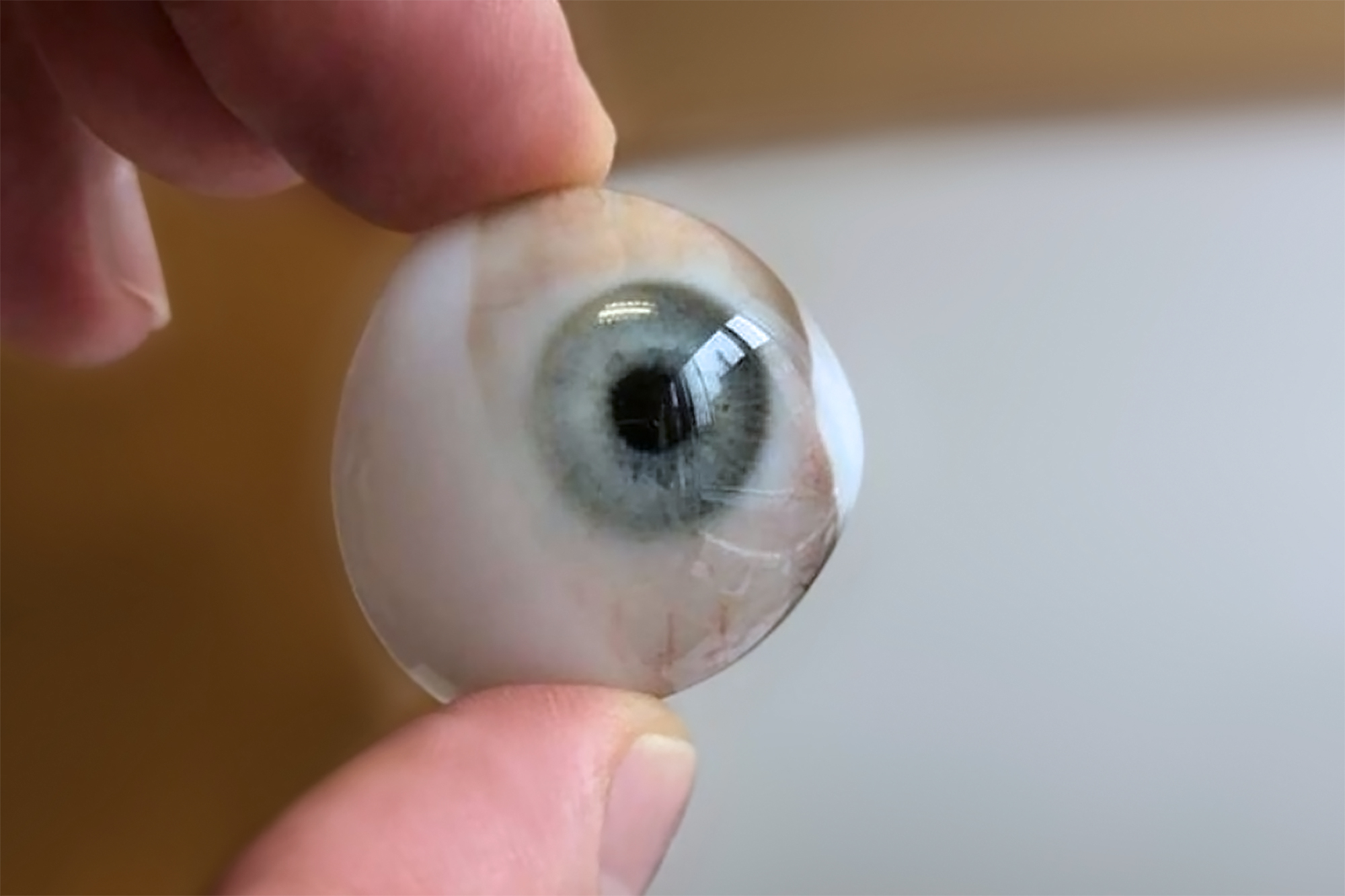A project at Fraunhofer IGD called Click2Print Artificial Eyes (C2PAE) is devoted to developing 3D-printed eye protheses. Researchers there have created software to control a completely digitalized 3D printing process for artificial eyes. A printer driver dubbed Cuttlefish, which the institute has been developing since 2014, is used. FIT AG, a German enterprise, is also involved in the C2PAE project; it is focusing on additive production of prosthetic eyes with PolyJet technology. The company also performs quality management for the 3D-printed prosthetics. It is now working to develop a process for series production of prosthetic eyes. Within the scope of C2PAE, trials are currently being conducted with patient-specific data at Moorfields Eye Hospital in London. Ocupeye, a startup, is also involved; it licenses and operates the software, deals with regulatory issues, and handles marketing and sales.
The first fully automatically produced prosthetic eyes
The first fully automatically produced prosthetic eye was developed within the scope of the C2PAE project. There had been earlier attempts to use 3D printing for artificial eyes, but they then had to be shaped and/or painted by hand. Eye prostheses have been laboriously made by hand from plastic or glass in Germany and elsewhere in Europe for centuries. 3D printing digitalizes the entire production process; ocularists are only involved to polish and insert the prostheses. The artificial eyes are made of plastic, retain their shape, and are at least as good as handmade versions in every respect. Patients have been unable to detect any differences from conventional prostheses. The first tests were carried out in Moorfields Eye Hospital in London, Europe’s largest eye clinic. The feedback received has helped the team of researchers to steadily improve these 3D-printed prostheses.
Benefits of the new software
The new software has been developed with two goals: to improve quality and to reduce the time and effort involved in producing prosthetic eyes. Ultimately, this will result in lower prices without sacrificing quality. The software delivers consistent results, since the same algorithms and printing processes are always used. If a prosthesis has to be replaced, all of the data is available and can be used to print a new one in a day or less. By comparison, it currently takes around four to six weeks for a patient to receive a prosthetic eye made of plastic. It typically needs to be replaced every two years.
Approval and distribution
The 3D-printed prosthetic eyes have already been approved as medical products in the UK and sales of them have commenced there. The C2PAE team is now working to make them available across Europe and the U.S. For this purpose, the researchers are also optimizing the user interface of the software and planning a cloud-based application.
 Fraunhofer Institute for Computer Graphics Research IGD
Fraunhofer Institute for Computer Graphics Research IGD
